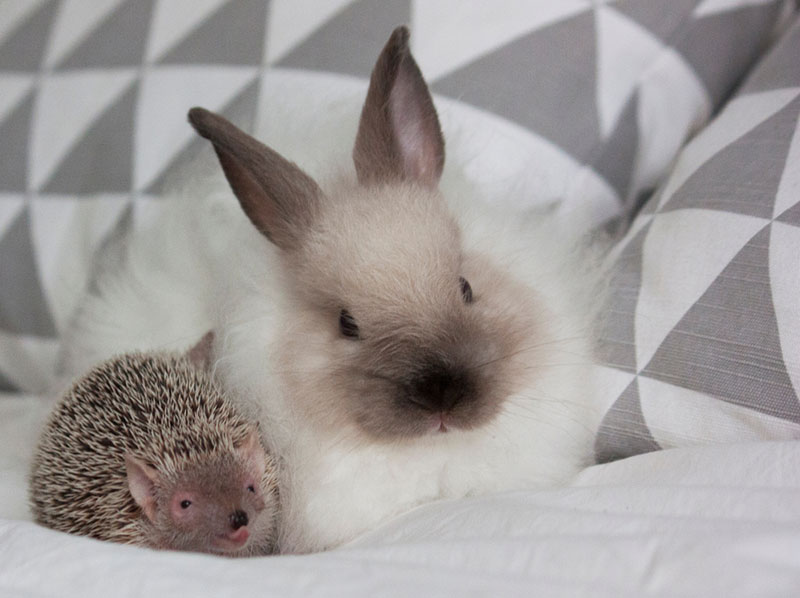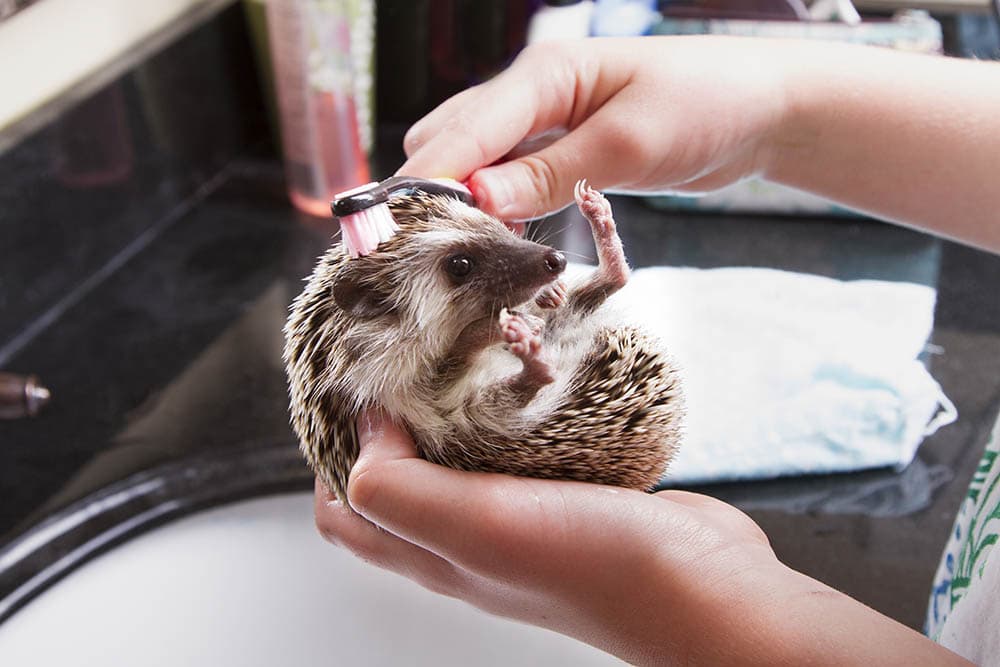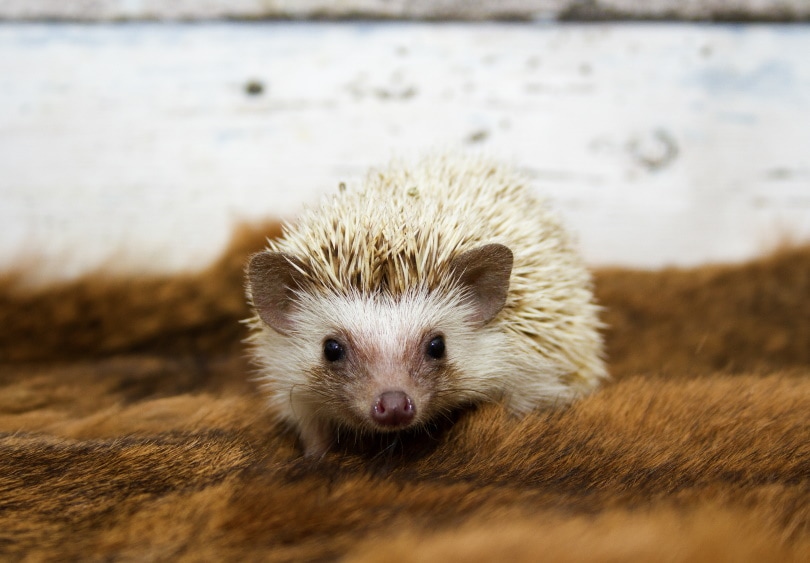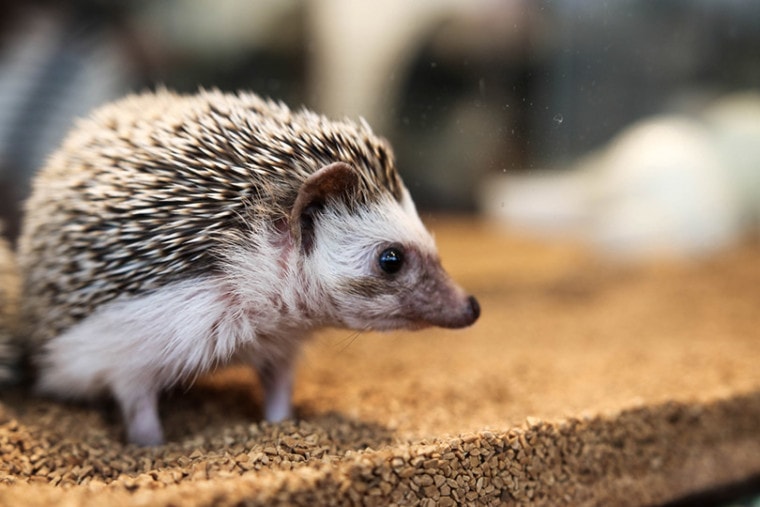
Having a hedgehog as a pet is fun and rewarding. Rewarding because it gives you the chance to get to know and care for a fascinating little exotic creature, and entertaining because hedgies have a host of fun behaviors to watch! However, it’s not like having a dog or a cat: potty training won’t happen in a jiffy! You will need a little patience and a few tips to train your hedgehog to use a litter box. So, in this article, we will walk you through four steps to litter train your hedgehog and make this whole process a lot smoother.
Before You Start: Gather Everything You Need
You only need two things to litter train your hedgehog:
1. A litter box
No need to buy the most expensive litter on the market. A simple plastic litter pan that you place in the corner of your hedgehog’s cage will be sufficient. Make sure it’s not too high, so your hedgehog can get in and out of it comfortably, without doing too many acrobatics. However, it should be deep enough to contain your pet’s droppings and urine. Besides, some options come with built-in clips to secure the litter box, but this is only useful if you have a wire cage. Ware Lock-N-Litter Small Animal Litter Pan and Oxbow Enriched Life Corner Litter Pan are two inexpensive options that meet the requirements listed above. In addition, they are easy to clean, made of durable plastic, and allow easy entry.
2. Litter
Obviously, you will need to purchase a good litter suitable for hedgehogs. It should be low in dust, non-toxic, absorbent, and soft enough for your pet’s delicate little paws. The best options for litter are:
On the other hand, you should avoid the following types of litter, as they are not suitable for hedgehogs:
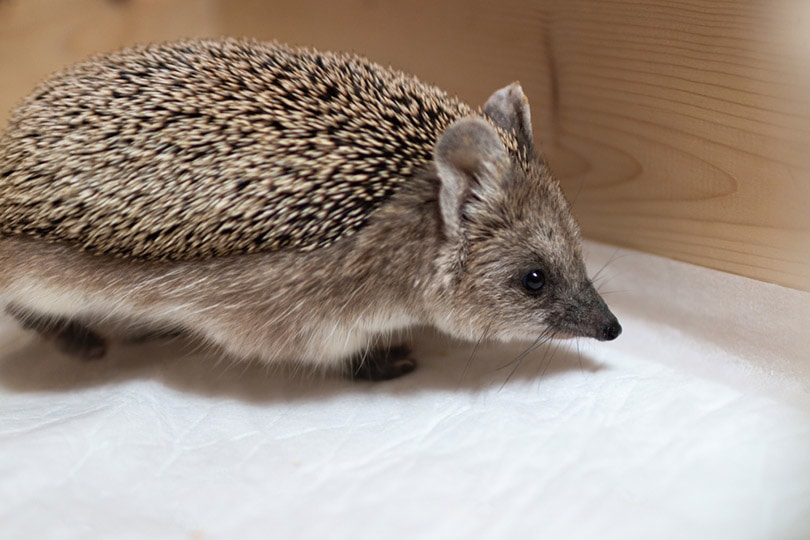
The 4 Steps To Litter Train Your Hedgehog
Now that you’ve got the two essentials together, it’s time to start potty training. Here are the four steps that will allow your little hedgehog to use his litter the same way a kitten would (or almost!):
1. Place the Litter in the Right Place
We recommend starting the training with the first option (litter in a corner away from the food), as this greatly facilitates the cleaning of the cage and allows your hedgehog to associate only one place with the toilet area. However, some hedgehogs are more difficult to train than others, so you should keep the second option in mind just in case.
2. Relocate Feces and Urine to the Tray
The best way for hedgehogs to learn to use their litter box is to use their sense of smell. To do this, as soon as your hedgehog relieves himself, simply relocate his droppings in the litter box. Clean the rest of the cage daily, or more frequently if necessary, so that the smell of his feces and urine is only coming from the litter box.
Side note: However, do not allow your hedgehog’s droppings to accumulate in their litter box. Clean your litter box every day but leave some excrement in a corner, so that the smell lasts there, without being too intense.
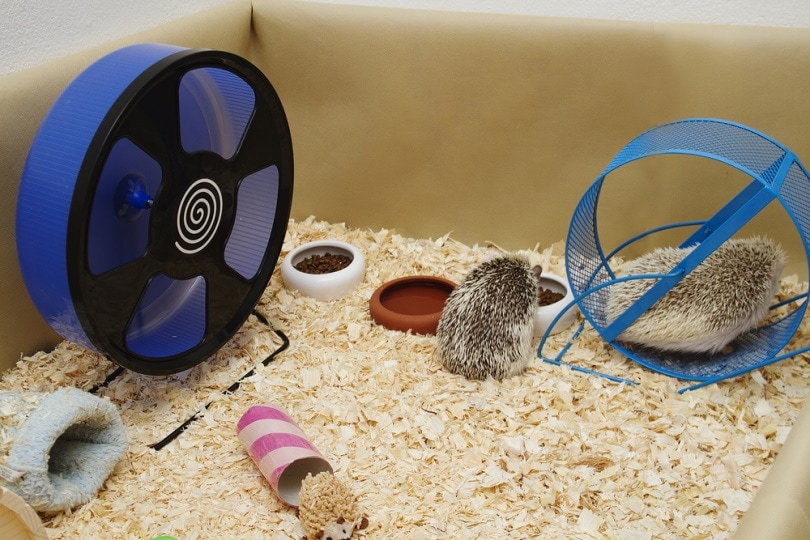
3. Establish a Daily Routine
Every day, you must interact and manipulate your hedgehog to tame him well. It also helps establish a potty-training routine. So, before taking your hedgehog in your hands, gently place him in his litter box. Leave him there for a few moments but do not force him to stay there until he has relieved himself. Then, place him on the ground and play with him. As soon as you see that he starts releasing a stool, gently put him back in his litter box. Finally, at the end of your bonding period, place him once more in his tray. Repeat this routine every day and reward your hedgehog with extra petting every time he uses his litter box to relieve himself.
4. Be Patient and Consistent
This is the key: patience and consistency are your best allies in litter training your little hedgie. It may also take longer in some cases, depending on the age and temperament of your hedgehog and also on your diligence at the task.
It is also strongly recommended to start potty training your hedgehog from an early age to increase the chances of success. Be aware, however, that this learning can take a few weeks or even a few months for some more stubborn hedgehogs. So just keep calm and keep going!
Final Thoughts
Hedgehogs are not as easy to litter train as cats, but they can learn to do so. However, they won’t do it instinctively – it is up to you to teach them how. By following the four steps in our articles and purchasing the appropriate accessories, you should be rewarded with a clean and perfectly potty-trained hedgehog!
Featured Image Credit: WildSnap, Shutterstock


